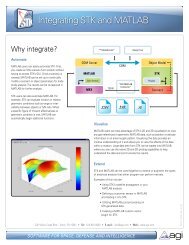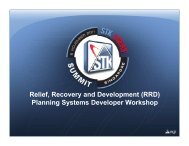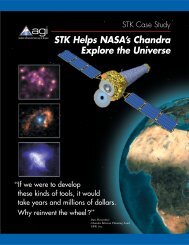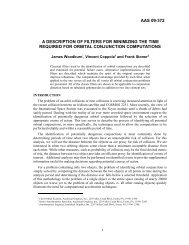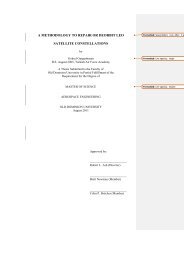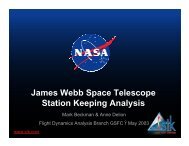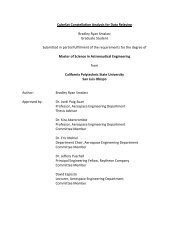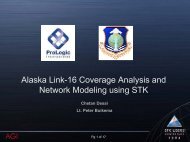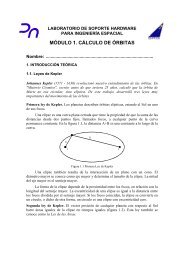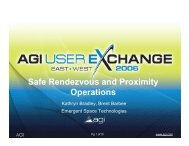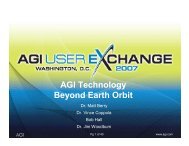SPACE WEATHER - AGI
SPACE WEATHER - AGI
SPACE WEATHER - AGI
- No tags were found...
You also want an ePaper? Increase the reach of your titles
YUMPU automatically turns print PDFs into web optimized ePapers that Google loves.
Section I: Residual Atmosphere Effects© SSS Educational Series 2012Section I: Residual Atmosphere Effects1. IntroductionThe saying that “outer space is a vacuum” does not apply to all regions of space.Spacecraft in LEO, especially those below 550 km, are still within the reach of theEarth’s atmosphere and have to carry out their operations successfully whilesubjected to the effects of the atomic and/or molecular atmospheric constituents. Inthis section, the components of the Earth’s atmosphere which spacecraft areexposed to and the different interactions are outlined.2. Earth’s AtmosphereThe neutral thermosphere is the region of the Earth's atmosphere containing neutralgases like Hydrogen, Helium, Atomic Oxygen (AO), 1 and Nitrogen extending from 90km to 600 km [1]. In this region, the absorption of EUV leads to a rapid increase intemperature. Solar activity strongly influences temperature in the thermosphere.Figure 1: Layers of the Earth’s atmosphere (Source: NASA).1 Due to photo-dissociation, oxygen exists predominantly in atomic form.1



